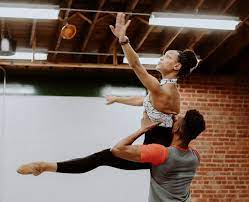Last Updated on August 24, 2023 by Hannah Stevens
Being a dancer takes grit and determination so well. You can’t build a dancer in just one day, it takes years to be one. Dancers, for one, may also experience financial distress, especially if it means going to competition after competition from different places. Transportation, clothing, food expenses can be also too expensive. Low-income dancers are having the difficulty in paying all that expenses, and it’s even worse when they don’t have jobs to support their ambition in meeting success. Fortunately, the government and nonprofit organizations answered their financial problems for them. Dance grants will help them immensely to take them to wherever their dance talent will take them. Dancers won’t even have to repay these grants. They just have to do whatever it takes to build a reputation in the dance industry. Finding dance grants may be difficult if you don’t know where to look for them. But even then, it would still be worth it.

Grants for Choreographers in the United States
Grants for choreographers is sponsored by a private and nonprofit organization to fund their needs for their equipment, tickets, competitions expenses, transportation fees, etc. The money the choreographers will receive can help them find their footing in the world where they were being treated land acknowledged less. Moreover, these grants support and advocate choreographers all across the United States.
Furthermore, the following list contains the grants for choreographers in the United States:
- The Jerome Robbins Foundation – This is established in the name of the late Jerome Robbins and aims to help performing artists in theater and dance. They provide competitive funding, with only invitational consideration and financial support for projects that have already been funded.
- National Endowment for the Arts – The US Congress created an independent federal agency to foster and finance the arts and creative thought. This has been around for more than fifty years and awards grants to artists of all kinds, including dance and choreography, as well as money for organizations and specific projects. Donations provide for a large portion of their funding. They also contribute to the funding of area arts organizations.
- Mid Atlantic Arts Foundation – They fund dance organizations coming from the Mid-Atlantic region. They also created a program called ArtCONNECT that campaigns dance organizations that have been developing relationships between artists and native communities. They provide tour support and matching grants. USArtists International also provides funds intended for touring and travel needs.
- National Dance Project – emphasizes the many aspects of dance performance, such as touring and production, and provides particular support to dance projects. Residencies and international exchanges might also contribute to their finance
- The Andrew W. Mellon Foundation – is a non-profit organization dedicated to the advancement of the arts and humanities in communities and education. Grants and funding are part of their agenda, with a total grantmaking budget of roughly $232 million in 2014. Since its establishment, the Foundation has given about $6 billion in grants to organizations all across the world.
- Mid America Arts Alliance – This provides financial support to art organizations such as dancers and choreographers which will allow them to expand their art nationally and globally.
- The Wallace Foundation – provides financial assistance to youth education and the arts. As a well-known benefactor and advocate of the arts in communities, the Foundation is approaching its third decade. They also have a slew of smaller sub-programs and money that may be tracked down and allocated to individual projects.
- South Arts – is an organization dedicated to promoting the arts and history of the South. Their funding can be utilized for a range of things, the most notable of which is touring, which includes a dedicated Dance Touring Initiative.
- Western State Arts Federation – It is a regional organization that provides competitive grants designed for choreographers and dancers to use for their production and touring costs.
- Doris Duke Charitable Foundation – Not only does the foundation promote and give funds to creative pursuits, but also environmental protection, children’s health issues, and medical research. The Foundation’s Arts Program, among other things, awards funding to modern dance organizations. It has paid out about $1.3 billion in grants since its establishment.
- Knight Foundation – It is a charitable foundation that promotes the propagation of arts and cultures into communities.
- The Pew Center for Arts & Heritage – The Pew Charitable Trusts funds this organization, which strives to encourage the art movement in the greater Philadelphia area. The Center for the Performing and Visual Arts, in collaboration with The University of the Arts, awards grants to initiatives in Performance and Exhibitions. They also have different funding levels, with some for new artists and others for established artists.
- UNESCO – Founded in 1945, the United Nations Educational, Scientific, and Cultural Organization uplifts cooperation and camaraderie in research within the international community. They mostly prioritize cultural heritage and provide a budget to preserve cultural customs and traditions.
- Arts Midwest – It is a regional arts organization that continues to fund individuals whose job centers on arts.

Conclusion
Dancers are rarely given acknowledgment or notice for their talents. They have to work twice as hard as anyone else, and gigs’ payments are not that promising. These grants intended for dancers across the country can help pay their expenses when they go to another city or country to perform, their transportation fees, their basic needs fee, etc. Additionally, they can also save their dance grants for future purposes, such as enrolling themselves in a dance school or joining a dance troupe.

